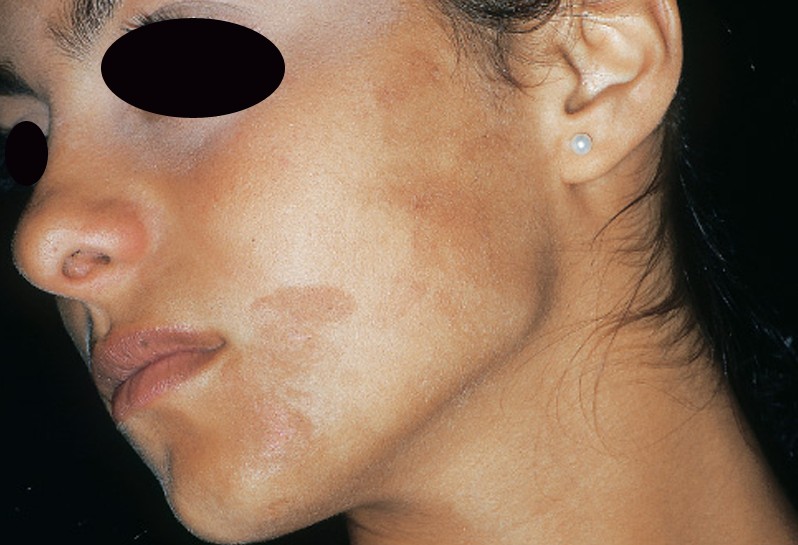Phytophotodermatitis
What is Phytophotodermatitis?
In order to understand what this disease is all about, we should start by explaining its name. ‘Phyto‘ means plant, ‘photo‘ means light and ‘dermatitis‘ is often an inflammatory skin condition, accompanied by a rash. In conclusion, this is a medical condition in which dermatitis appears under two conditions: contact with a plant and light exposure. Phytophotodermatitis is also known as Lime disease (not to be confused with Lyme disease), Berloque dermatitis or Margarita photodermatitis.
The underlying mechanism of this disease is a chemical reaction to a plant, this reaction making the skin to react to the light. Often times, it is confused with other skin conditions, including atopic dermatitis or chemical burns. The truth is that it is caused by the contact with different plants and vegetables, including parsnip and citrus fruits (limes especially). The reaction to the chemicals contained in the plant, vegetable or fruit is triggered when the skin is exposed to UV light. The interesting thing is that instead of affecting areas of skin exposed to the sun, it affects only the areas exposed to the light but that had come in contact with the chemicals in the first place. You will see it in runners, joggers, hikers, bicyclists and bartenders or chefs who handle a lot of citrus fruits.
Symptoms of Phytophotodermatitis
These are the most common symptoms of phytophotodermatitis:
- Inflammatory eruption on the skin that has come in contact with plant, vegetable or fruit chemicals. This eruption appears within one day of exposure but the peak will be after two or even three days
- Blisters and burning sensation can accompany the initial skin eruption
- Skin aspect typical to the one of sunburns
- The skin can present red and itchy patches, having a similar aspect to the one of eczema
- When the eruption heals, it can turn brown
- The skin can become discolored, this lasting for months
- As the eruption appears only on the skin areas where the toxins have reacted when exposed to UV light, unusual patterns can appear on the skin
Causes of Phytophotodermatitis
These are the most common plants, fruits and vegetables that can trigger a chemical reaction and lead to phytophotodermatitis:
- Wild parsnip
- Parsley
- Celery
- Hogweed
- Carrot and wild carrot
- Blister Bush (South African plant)
- Citrus fruits (lemon, lime, Bergamot orange)
- Fig
- Wild flowers
- Grass
Often times, phytophotodermatitis is mistaken for a case of poison ivy and, in children, it is often confused with child abuse because of its unusual aspect. The important thing to understand is that the reaction depends on several factors, including: amount of chemical substances that have reached the skin (often, through juice or sap), the amount of furocoumarins in the plant (chemical compounds commonly found in plants) and the amount of exposure to actual UV light.
Treatment
There are a series of treatments and cautionary methods you can take in order to help with this condition. These are:
- If you know that you have handled any of the above mentioned substances, then you can reduce your chances for phytophotodermatitis to appear by staying indoors. In some cases, the condition will not be prevented as UV light can pass through the windows but, at least, it will be less severe
- Topical and oral treatments are recommended in order to reduce the inflammation
- Bleaching creams are indicated for the areas on the skin where hyper-pigmentation has produced. They can bring the skin back to normal
- Proper hygiene can also be of help. If you handle any citrus fruits and especially limes, then be sure to thoroughly wash your hands
- In case you have to go into the woods or areas where there are wild flowers and plants, be sure to cover as much of your body as you possibly can. Also, make sure to properly wash the areas that are not covered, hands especially
- Avoid throwing wild plants and flowers into camp fires. When burning, the chemicals contained by those plants are eliminated into the air and they can easily reach the exposed skin
- Wet, cold compresses can reduce the inflammation and soothe the skin
- Anti-inflammatory medication, such as topical steroids, are recommended in the early eruptive phase, especially if there are blisters on the skin
- Use sunblock with high SPF factor
As you have seen for yourself, the most important thing when it comes to phytophotodermatitis is self care. There are medications that can help with the symptoms but, often times, this goes away gradually on its own, provided you take the necessary measures to help faster healing. Most of these measures are related to hygiene and some they are of common sense. Plus, you have the medication to help in cases that are more severe.
Phytophotodermatitis Pictures
Collection of some of the pictures of Phytophotodermatitis…




